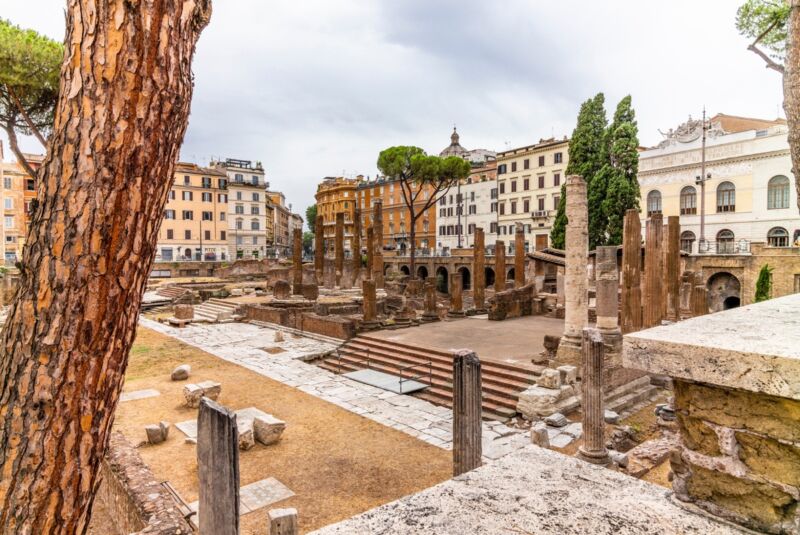
Enlarge / The Largo di Torre Argentina in Rome contains the Curia of Pompey. This place is falling apart. New study concludes it was built in 3 phases. (credit: Adam Carr / Wikipedia)
The Curia of Pompey is famous for being the site where Julius Caesar was stabbed to death on the ides of March in 44 BCE. It is of great interest to tourists, historians, and archaeologists alike. After analyzing mortar samples collected from the curia, researchers from Italy and Spain have confirmed an earlier hypothesis that the structure was constructed in three distinct phases, according to a recent paper published in the journal Archaeometry.
In ancient Rome, a curia was a structure where members of the senate would meet. The great Roman general Gnaeus Pompeius Magnus (Pompey) built this particular curia as a memorial to his own military achievements. A large theater section contained a temple, a stage, and seating on one end; a large porticus (housing the general's art and books) surrounded a garden in the middle; and the Curia of Pompey was at the opposite end.
During Julius Caesar's reign, the Roman senators temporarily met in the Curia of Pompey after their usual Curia on the Comitium burned down in 52 BCE. (Followers of an assassinated tribune named Publius Clodius Pulcher set it on fire while cremating his body.) Caesar's planned replacement (Curia Julia) was under construction as a replacement meeting site when the ruler met his own brutal demise at the base of the Curia of Pompey. The senators who killed him thought assassination was the only way to preserve the republic, but the murder ultimately lead to he republic's collapse.
No comments:
Post a Comment